One Hundred Years Young
Jul 12, 2023

Nā Adrienne Anderson Waaka
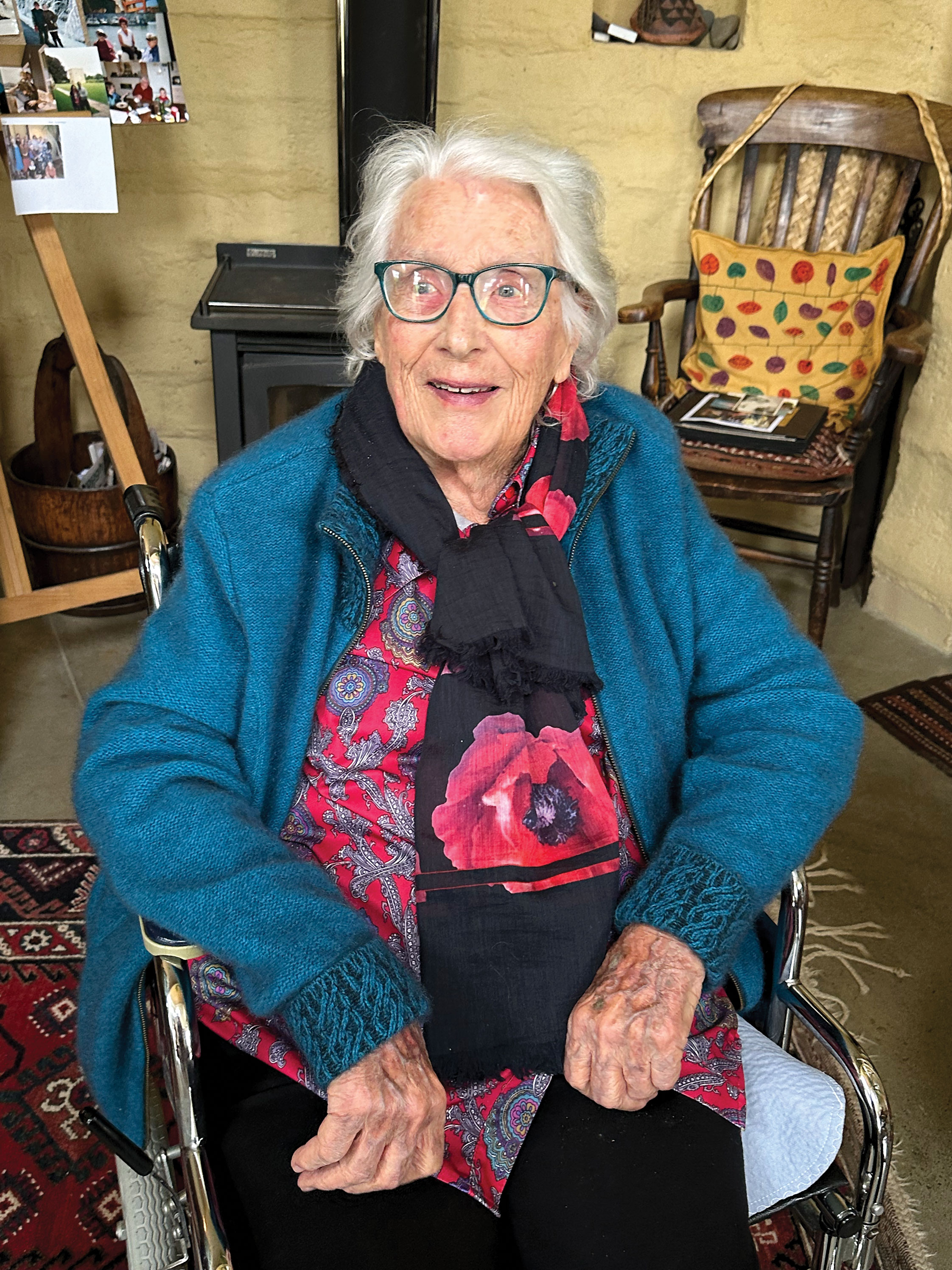
Pam relaxing at daughter Kaja’s home in Blenheim. Photograph: Adrienne Anderson Waaka
It isn’t often that one gets to spend time with a centuarian, especially one with as much zest for life as Pamela Jungersen (née Hislop). Her sense of humour, positive attitude and ability to tell a great yarn are infectious and I found myself so absorbed in her stories that several hours just vapourised. To say her life has been one well lived is an understatement.
Born in Wellington on 5 January 1923, Pamela Jungersen is the only child of Irish mother, Florence Spears; and Scottish, Ngāi Tahu, Kāti Māmoe, Waitaha father, Frederick Hislop. Her parents’ marriage was short-lived, and as a one-year-old she and her mother made the long journey by ship to London. And so began a life filled with travel, adventure, a world war, a love of sailing and a return home.
Pam’s childhood was in many ways idyllic despite the era, spending time with family and friends and holidaying in Scotland and the South of France. Finishing high school in 1938, the day before World War II was declared, Pam and her mother headed to Egypt to live with her Aunt Eve and Uncle Edgar. Her uncle was the Minister for Shipping for the Suez Canal area during the war, and Pam says they “lived in a very flash house.” Her family enrolled her in a local school to improve her French and to learn shorthand and typing but, because she wasn’t interested and didn’t put in any effort, they let her leave.
It was with time on her hands she discovered parties and having fun, and developed her great love of socialising while beginning her wartime career in cyphering with a position at Navy House. Eventually, Pam headed to South Africa where she worked as a part of the war effort.
In 1942, she and her mother travelled back to the UK, disembarking in Liverpool with 45 pieces of luggage in tow, and had to get a lorry to cart their belongings back to London. “I had to sit on top of the luggage wearing a smuggled mink coat,” she says with a wry smile.
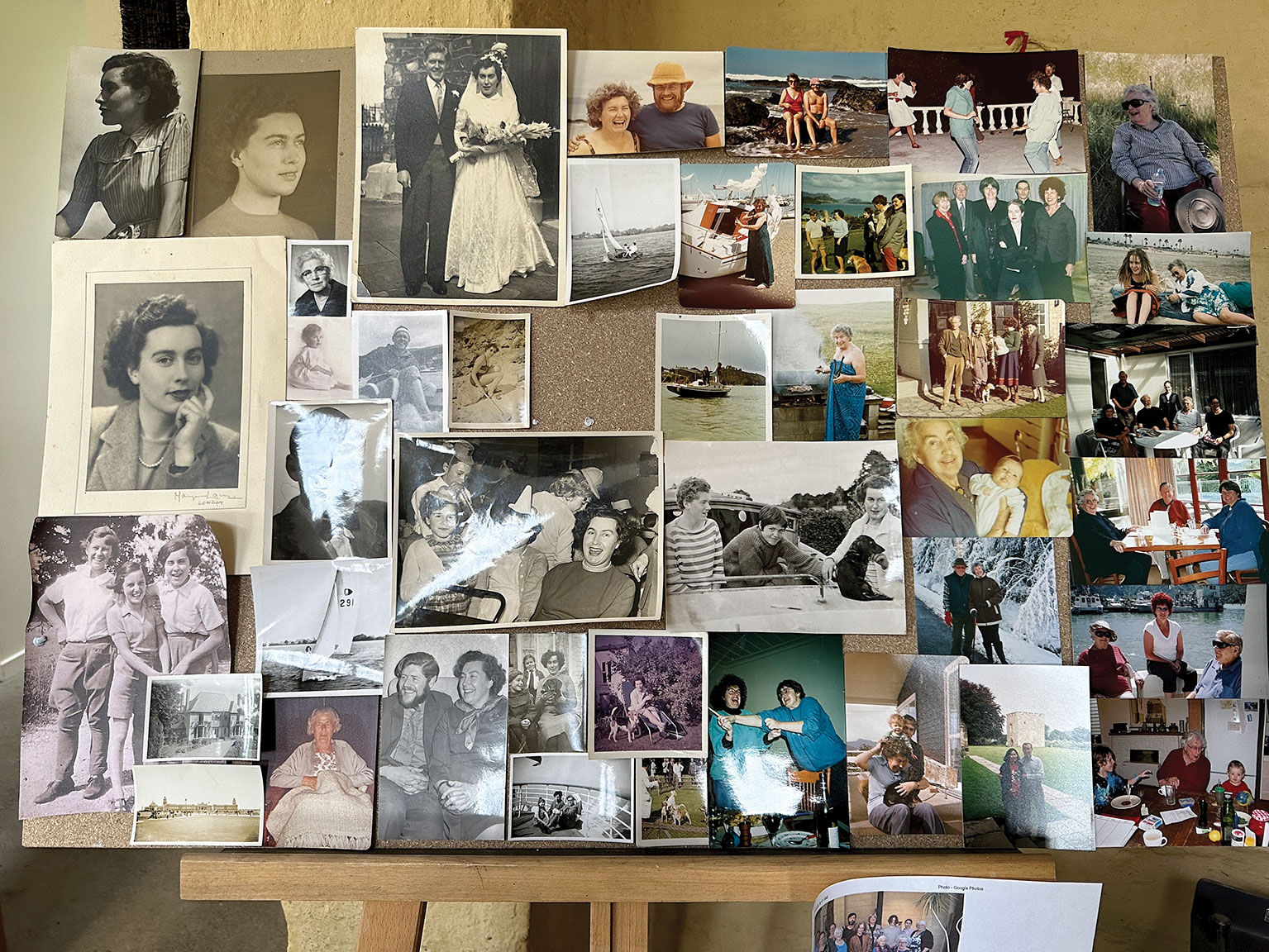
A photo montage of Pam’s life put together for her 100 year birthday celebrations. Photograph supplied.
On their return to the capital, Pam describes arriving home to their “very sooty” flat – they had left the windows open to mitigate damage from bomb blasts. Desperate to join the Wrens (Women’s Royal Naval Service) from the time she was 16, Pam was finally called up and drafted to St Helen’s in Lancashire to learn how to be a coder. Codes came by radio or teleprinter and had to be turned into code or deciphered via the manipulation of letters and numbers “a bit like a complicated crossword puzzle.” In these early days, before the war “really” started, Pam says they had a “jolly good time.”
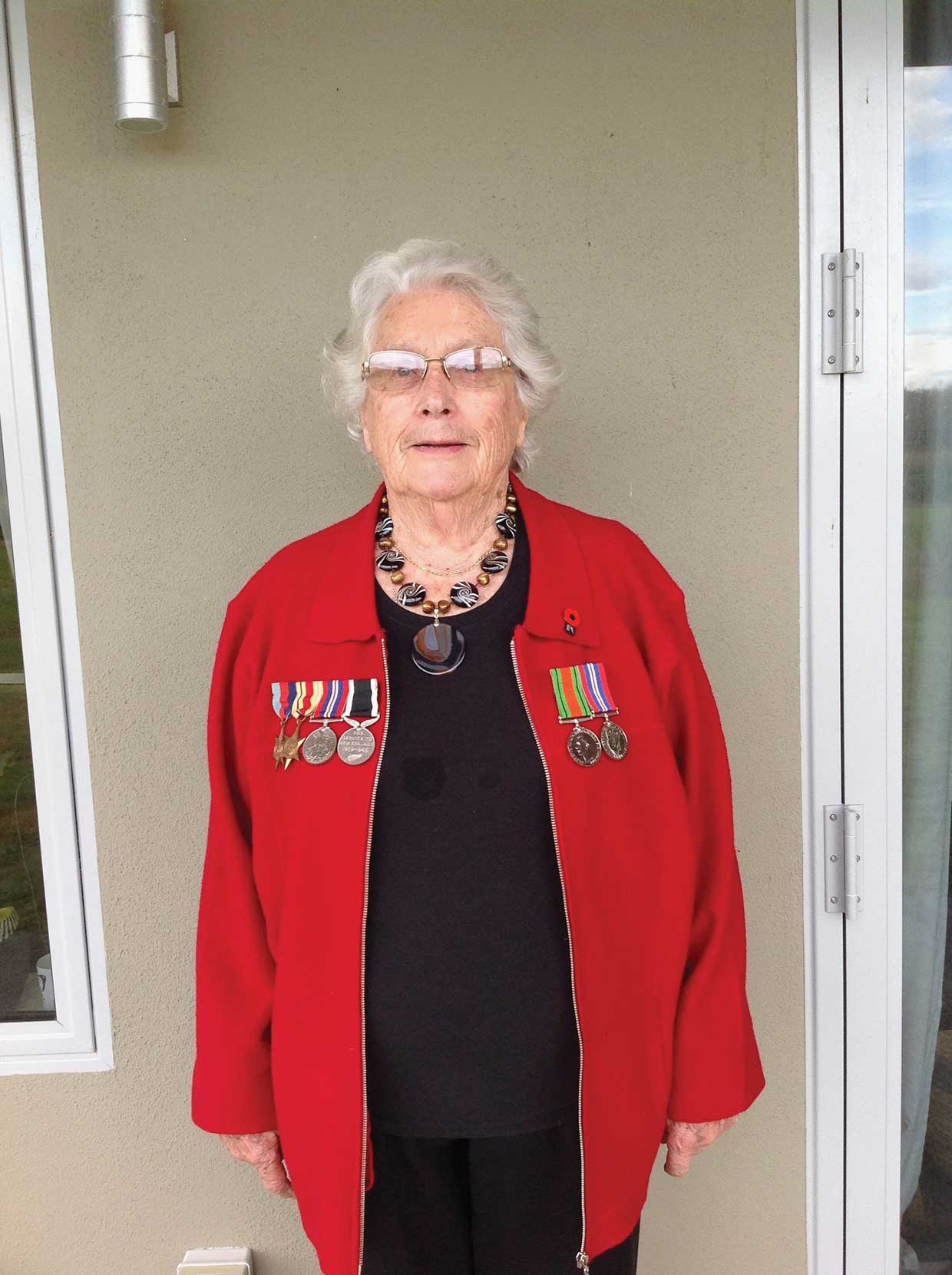
Pam adorned with wartime medals,
Back home in London, on her last night before being “sent to war”, she was having dinner with her mother and her good friend, Barb, when a massive bomb went off just around the corner, killing many people. Her mother, who was in the Red Cross, and Barb, a nurse, went off to see what they could do to help, and that was the last Pam saw of either of them until the war was over.
Hoping to get sent to New York, Pam was rather disappointed when posted to Egypt on board one of the Queen’s liners. They had to dodge German and Italian bombs near Malta, sitting in the ship’s lounge singing and hoping they were being brave. Pam says the war was a time when people partied hard because the next day you could be shot. “We grew up fast. We lived fully, we worked and played hard. We always had a good time when we weren’t working.”
There were times when she was afraid for her life. “You didn’t quite know what was going to happen, so you just put up with it. Work had to be kept secret. If you started querying it, you soon got into trouble with somebody, so you could only express fears with immediate fellow workers.”
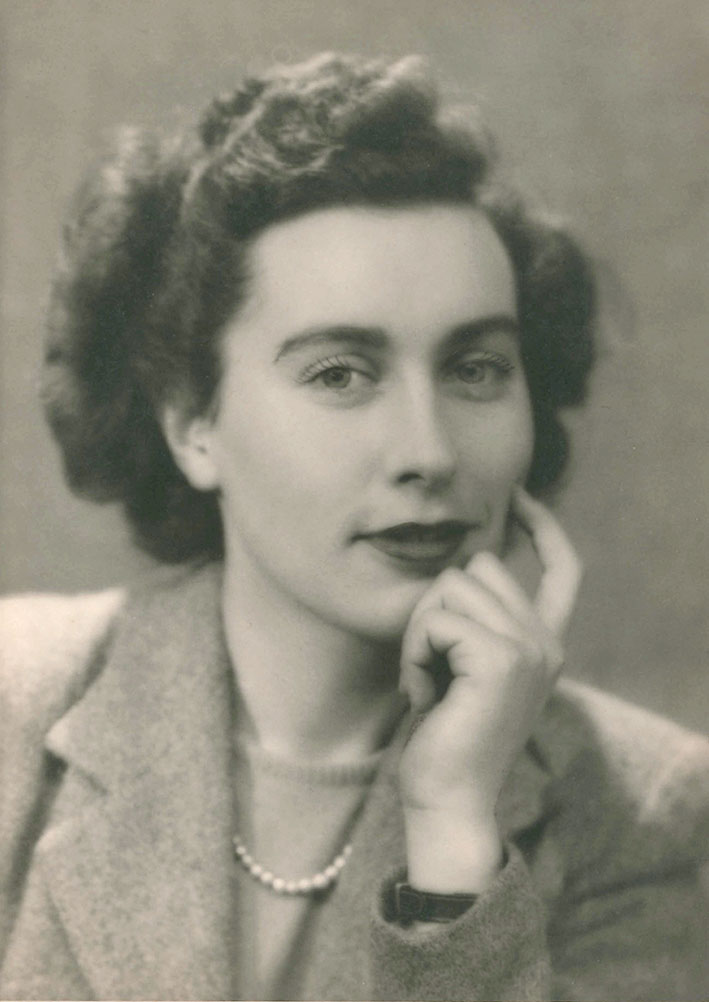
A young Pam in wartime London
In 1943, after several weeks at transit camp Fayyid, Pam was drafted to a submarine base in Beirut. Her memory of this time was somewhat idyllic, skiing all day and then coming back down to swim in the warm Mediterranean. She was then sent to Port Said and finally Alexandria. Pam had volunteered to go to Japan, but then the war was over and along with everyone else, she waited for a boat home. Back in London and still only 23, Pam went on to train as a radiographer. She doesn’t think it was the job she really desired but says there weren’t many career options open to women after the war.
After completing her training, she took an exchange to Denmark where she met future husband, Jorgen Jungersen. Pam says she was “potty about sailing” and desperately wanted to move from central Copenhagen to the coast, which took some time to get the right job. She moved in as a boarder at Jorgen’s mother’s home and the rest, as they say, is history.
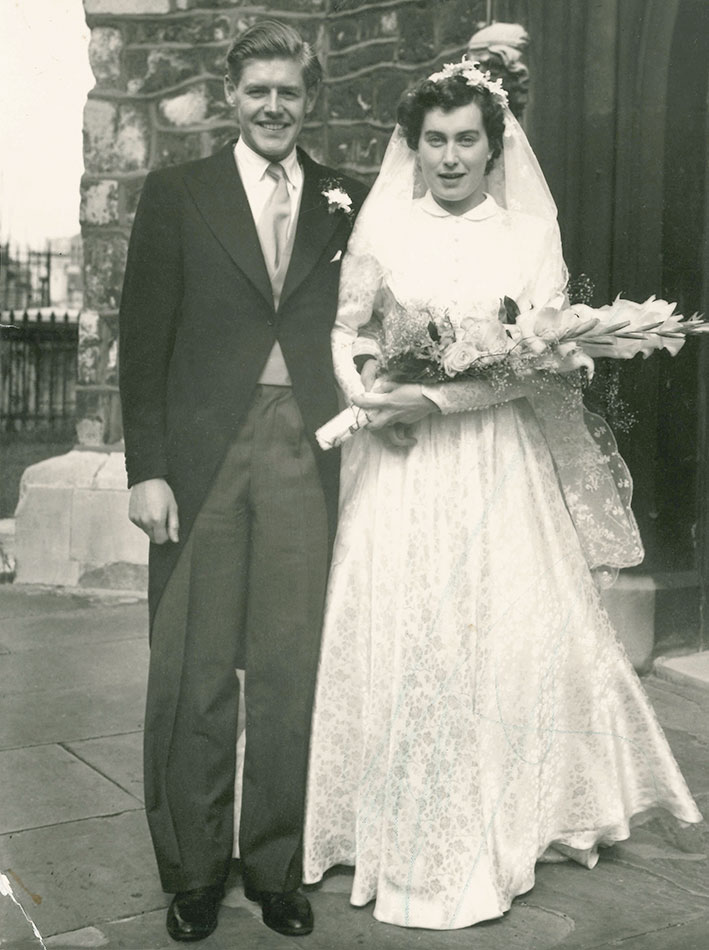
Jorgen and Pam on their wedding day in 1950.
They were married in 1950 in Putney among friends and had their first daughter Kaja in 1951 before moving back to Denmark where their second daughter, Susanne, was born in 1953. She describes their life in Copenhagen as co-operative living where all the houses were built around a central courtyard with shared laundries and lots of children. “I would bike everywhere with a baby on the front and another on the back.”
Returning to the UK in 1957, Pam continued with her career as a radiographer and Jorgen worked as a printer. It was during this time, in her early 40s, that Pam was reunited with her birth father, Fred. “I was gobsmacked,” she says in reference to a telegram she received saying, “Expect your father tomorrow. Love Liz and Graham.” “I knew nothing about him, and had no idea who Liz and Graham were.”
However, Pam met Fred and they stayed in touch. When, in 1966, a major economic recession hit the UK, Fred encouraged them to emigrate to New Zealand where he had got a job for Jorgen with the Northern Advocate in Whangarei. “We had lost everything and couldn’t get work, so came to New Zealand.” Arriving in New Zealand in the late 1960s after eight weeks at sea was something of a culture shock, says Pam. “Women didn’t do much when we first got to New Zealand. It was quite a shock seeing the place of women – ladies a plate, so to speak.” Fred had told them they were moving to a city, but after London, Whangarei was just a very small town for the Jungersen family. “We lived down a dirt road. We had never been on a dirt road before,” says Pam. “But it was a good move. Jorgen loved it.” It was the delight of discovering a big family she never knew she had that brought a “rich fullness” to their lives.
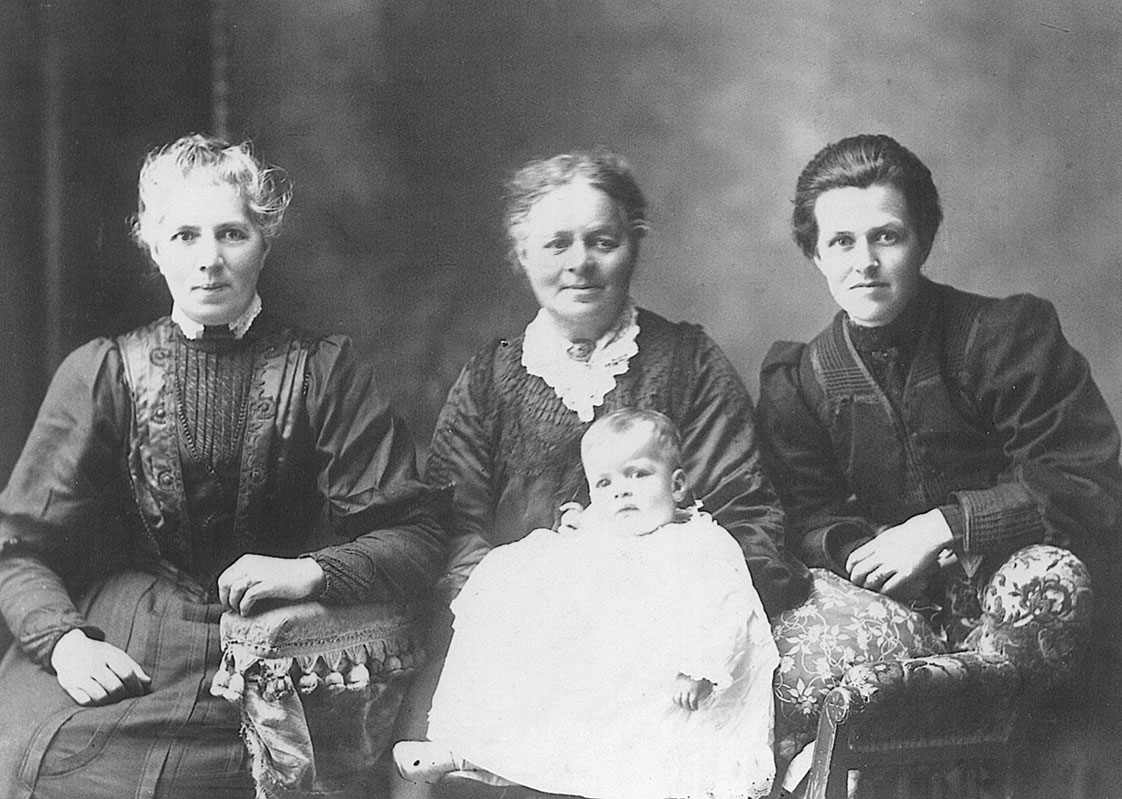
Pam’s great-grandmother Maria Catherine (centre) with her sisters Emma (left) and Polly (right) – the daughters of Motoitoi and Richard Driver.
They had very few biological family in the UK and while Pam is Fred’s only child, he was one of five children, so there was a whole lot of cousins scattered throughout the country to connect with. “To go to a place where you had extended family, and to go to Puketeraki and see ancestral graves, it was quite strange really.” Once Fred found his daughter and granddaughters, he was very quick to register them with the Ngāi Tahu Māori Trust Board. Pam is the great-great-granddaughter of Motoitoi who married Richard Driver, and great-granddaughter of Maria Catherine. Pam says that because life was busy juggling family and work, she didn’t have much time to contemplate her new whakapapa – although she and Jorgen did get involved in some Māori activities in the community in Whangarei.
It was really through her daughters that their world was opened to things Māori: Kaja who was engaged in running Treaty workshops in a range of government organisations over 30 years and who later went on to work for Ngāi Tahu Development Corporation; and Susanne as a teacher who was principal of Porirua College for 22 years. Pam and Jorgen made Whangarei their home for several years before moving south to Blenheim in the 1980s, where Pam still lives.
Now in a rest home, she continues to make the most of life. Daughter Kaja lives on a lifestyle block on the outskirts of Blenheim. Her daughter Justine and grandchildren Rudy and Salma live in Wellington as does Susanne. The bond between these wāhine was a privilege to observe – not just mother and daughters but, without a doubt, best friends.
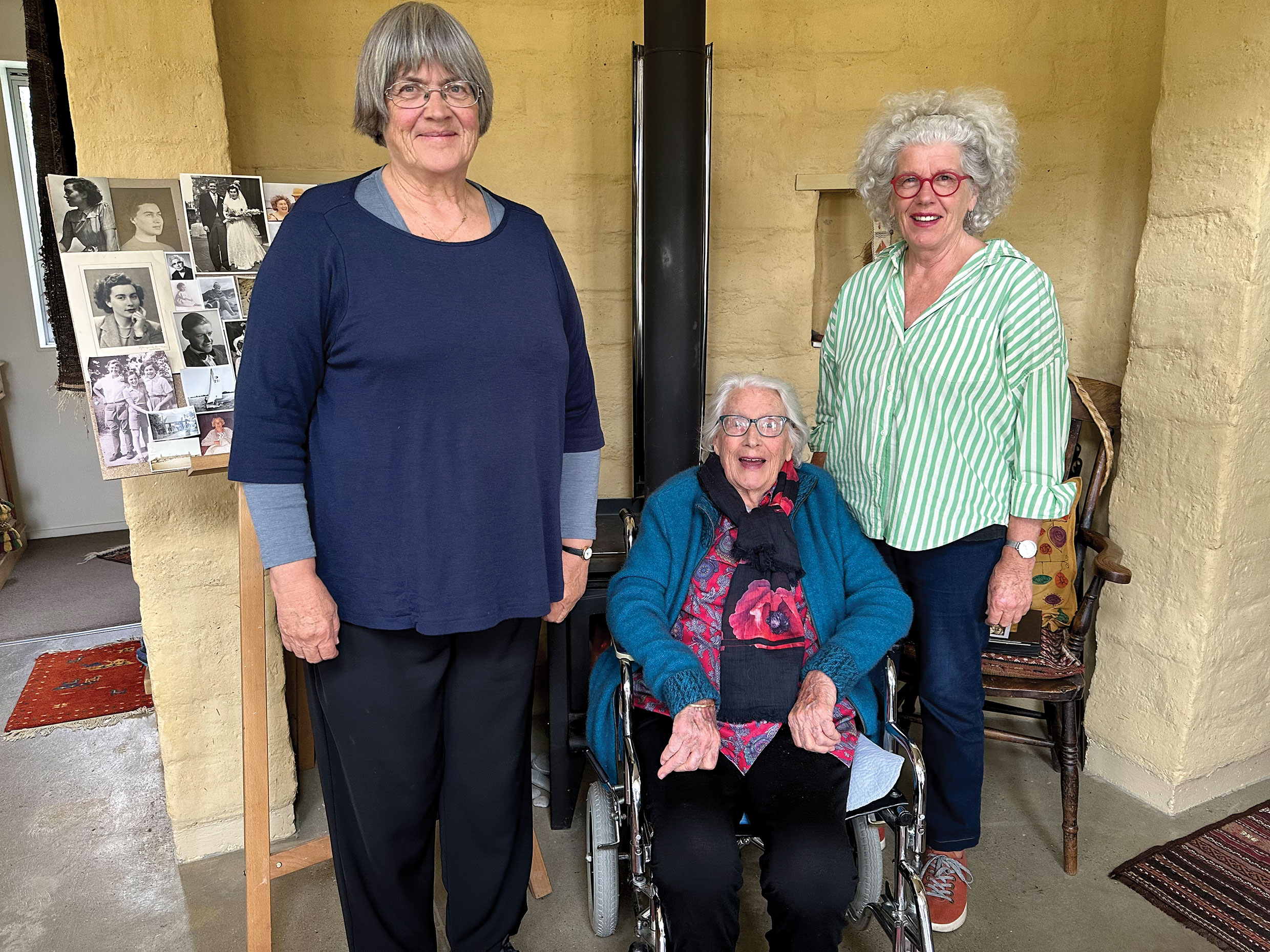
Pam with daughters Susanne (left) and Kaja (right). Photograph: Adrienne Anderson Waaka